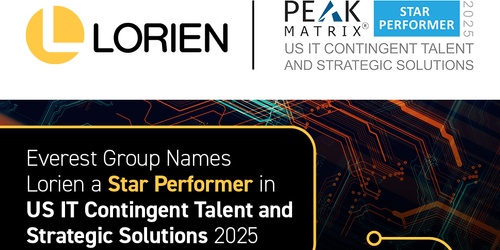Executing an effective, well-rounded talent management strategy is one of the most important aspects of running a successful business. It’s not just about getting the right people in the right roles (though that is a large part of it); it’s also about developing a competitive advantage through effective recruitment, onboarding, and employee development.
While most companies understand the employee life cycle and how important it is to create a talent management process framework, it’s not always easy to see where there are opportunities for improvement. But when you understand the fundamentals of talent management and how to get them right, you put business in the best possible position for success.
In this article, we’re going to look at two important aspects of talent management: the five C’s and seven stages of talent management. Together, these frameworks will help you to better evaluate your talent needs and implement sound strategies for attracting and retaining the best talent out there.
What Are the 5 C’s of Talent Management?
One useful way to think about the full scope of talent management is through the five C’s of talent management: culture, competence, compensation, career development, and communication. Each of these represents something that is important to employees, so getting them right should increase your ability to attract and retain talent.
1. Culture
Developing a positive, inclusive workplace culture is increasingly seen as a competitive advantage. This is especially true in industries like tech, where highly-skilled talent is needed but there is candidate scarcity. According to a recent Gallup study, a mere 2 in 10 employees “feel connected to their company’s culture.” When employees feel connected, they are not only happier, more engaged, and more productive—they’re also much less likely to leave the organization.
2. Competence
There is a direct link between “organizations that have made a strategic investment in employee development” and outcomes like increased profitability and an increased ability to retain highly skilled talent. Providing meaningful learning and development opportunities demonstrates to employees that they are valued and helps them to feel like the organization supports them.
3. Compensation
There’s really no way around it: competing for the best talent requires fair and competitive compensation and benefits. How employees are compensated can also say a lot about the organization and how much it values their contribution.
4. Career Development
When employees feel “stuck” in a given role and don’t see opportunities for promotion or advancement, they are likely to become less engaged, less productive, and less content over time. Sometimes, all it takes to keep employees motivated and engaged is to help them explore—and pursue—career development opportunities that align with the kind of work they prefer to do.
5. Communication
Like with any relationship, open communication between employees and their employers is a major key to success. When employees are able to share information, ask questions, and express concerns, they are likely to be more engaged and productive. Clear communication also helps to build trust and make sure everyone is working together toward the company’s shared goals.
What Are the Stages of Talent Management Strategy Development?
While every organization should tailor the process to their own needs and priorities, starting with an established talent management process model or framework is a great way to ensure a consistent and effective approach to finding, hiring, and retaining quality talent. A popular talent management framework is the talent management model McKinsey recommends, which consists of seven stages or steps in talent development:
1. Workforce Planning
The best talent management strategies start with an understanding of the organization’s current strengths and weaknesses as they relate to talent. Start with your organization’s highest-priority objectives first, and then you can start evaluating the advantages and disadvantages of different workforce solutions.
2. Talent Acquisition
Talent acquisition is all about sourcing and attracting high-quality candidates. The more targeted your approach to talent sourcing, the more efficient and cost-effective your overall talent strategies will be. By focusing on the most in-demand skills, companies can filter candidates more quickly and zero in on the right talent.
3. Recruitment and Selection
After you know what you’re looking for, the next step involves recruitment and candidate selection. Evaluate not only candidates’ relevant skills, but their experience and cultural fit, as well. That way, you can build a like-minded team that’s ready to work together toward the organization's top objectives.
4. Onboarding
Efficient and effective onboarding processes empower new hires to hit the ground running. Onboarding involves helping employees to understand their roles and responsibilities, and helping them to acclimate themselves to the organization’s culture.
5. Learning and Development
Even highly qualified candidates will benefit from the right learning and development opportunities. Companies with a reputation for providing meaningful learning experiences tend to do better when it comes to attracting and retaining the best talent, since employees do, in fact, are empowered by these opportunities.
6. Performance Management
Effectively monitoring and managing employee performance plays a vital role within any talent management framework. Performance management involves setting clear expectations, providing frequent feedback, and recognizing both individual and team achievements.
7. Retention and Succession Planning
For many companies, retaining top talent is a persistent challenge. It’s also a costly one, as it’s considerably more cost-effective to retain existing employees rather than replacing them. This final stage of the talent management process focuses on keeping employees engaged, and empowering them with meaningful development and advancement opportunities. It also includes thinking about the organization’s future, and taking proactive steps to prepare for the organization's future talent needs.
Lorien: A Talent Management Partner for Tech
Working with the right talent management partner can make a big difference in any organization’s ability to source high-quality talent. At Lorien, we provide a wide range of workforce solutions, including permanent and contingency-based options. We’re ready to leverage our decades of experience and expertise to help you find the perfect talent for your business. Visit our website to learn more about us and how we can help you take your business to the next level!








